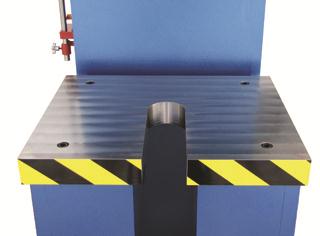Hydraulic presses are used to make tools and equipment for businesses operating in a diverse range of industries, including automotive, technical, industrial and medical. Without these tools, part spectrums, cylinders, mining tools, rail maintenance equipment and surgical instruments would not be developed, saving lives and extracting natural resources like coal and oil. And perhaps, more importantly, medical tests and procedures would produce far too many errors.
In fact, each time a patient receives a mammogram, ultrasound or MRI, they rely upon the accuracy of medical machinery. To reduce the time it takes to mass produce these and other tools and equipment, welding and machining firms are using
advanced press-technology. To continue to improve upon their products, welding and machining companies have also started to rely on aluminum extrusions when using connectors. It’s these extrusions that provide added efficiencies for machinist and welders. Size ranges for aluminum extrusions go from 72 to 97.000 in. Slot width for the parts can go from 0.255 to 0.32 or wider.
However, to yield impressive production results, hydraulic press technologies must continue to be researched, inspected and advanced. Additionally, to ensure maximum benefits are gained from hydraulic presses, constant pressure has to be applied throughout the press' stroke. Advanced robotic welding cells must also be used to perform secondary and primary functions. It's this combination of operations that has made it possible for manufacturers specializing in the medical industry to develop surgical instruments and implantable devices.
Testing medical machinery for accuracy
Of course, before developing machinery for medical organizations, companies must have certifications like the ISO 13485, a quality management system certification. After getting required certifications, machinists and welders can use
hydraulic presses to gain heat treating, anodizing, passivation and finishing benefits. They can also reduce production costs and control processes.
To test medical machinery, ballbar analysis is conducted. In fact, according to Modern Machine Shop, "Ballbar analysis is generally regarded as a practical, convenient method for assessing CNC machine contouring accuracy." Using ballbar analysis, manufacturers and machinery companies can determine the servos performance of their tools and equipment, ensuring that they develop the highest quality products for their clients.
Another way that medical machinery is tested and kept in top operating condition involves laser calibration. Errors and wear and tear are compensated for, or reduced, when laser calibration is used. Like ballbar analysis, it's also used to reveal how accurate a machine's measurements and operations are.
Considering that medical organizations, including emergency centers and hospitals, rely on their machines to determine whether or not a patient has a major illness or disease and to perform invasive surgeries, it's critical that these steps continue to be taken to measure machinery accuracy. Although many medical professionals may not be aware, accurate machinery could also reduce the numbers of times medical organizations are sued for malpractice.
Sources:
http://www.sme.org/MEMagazine/Article.aspx?id=68224&taxid=1442

